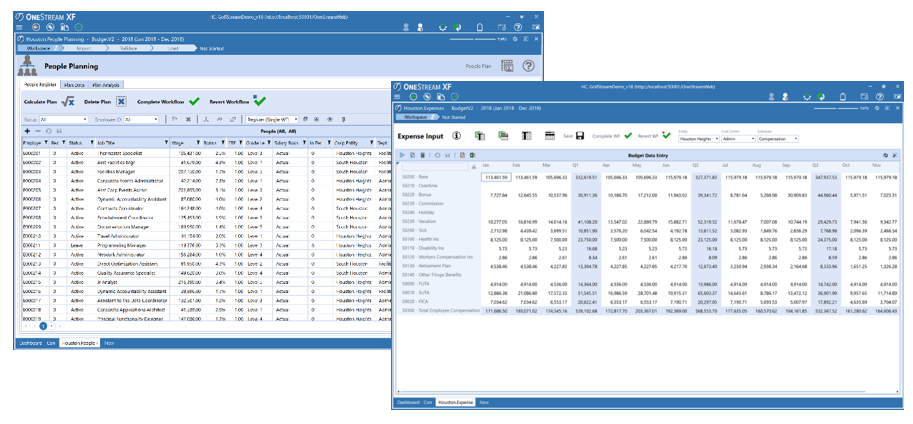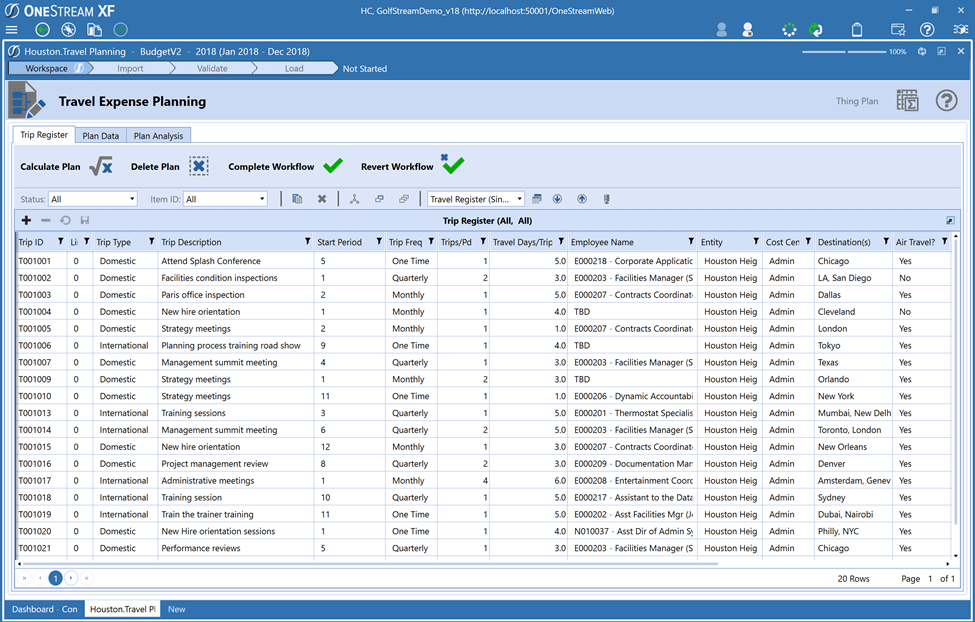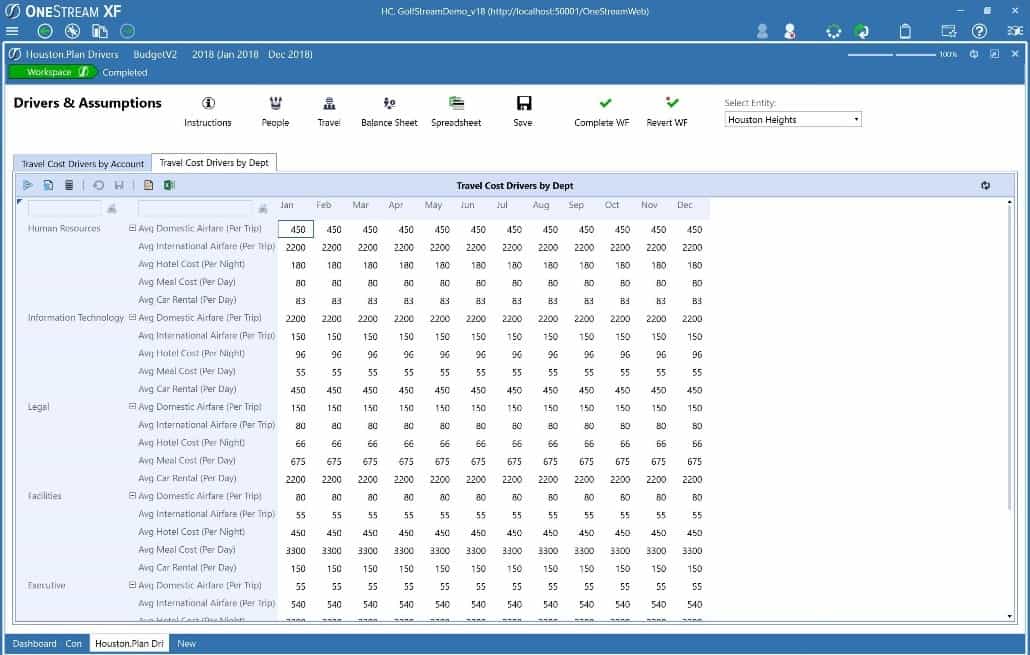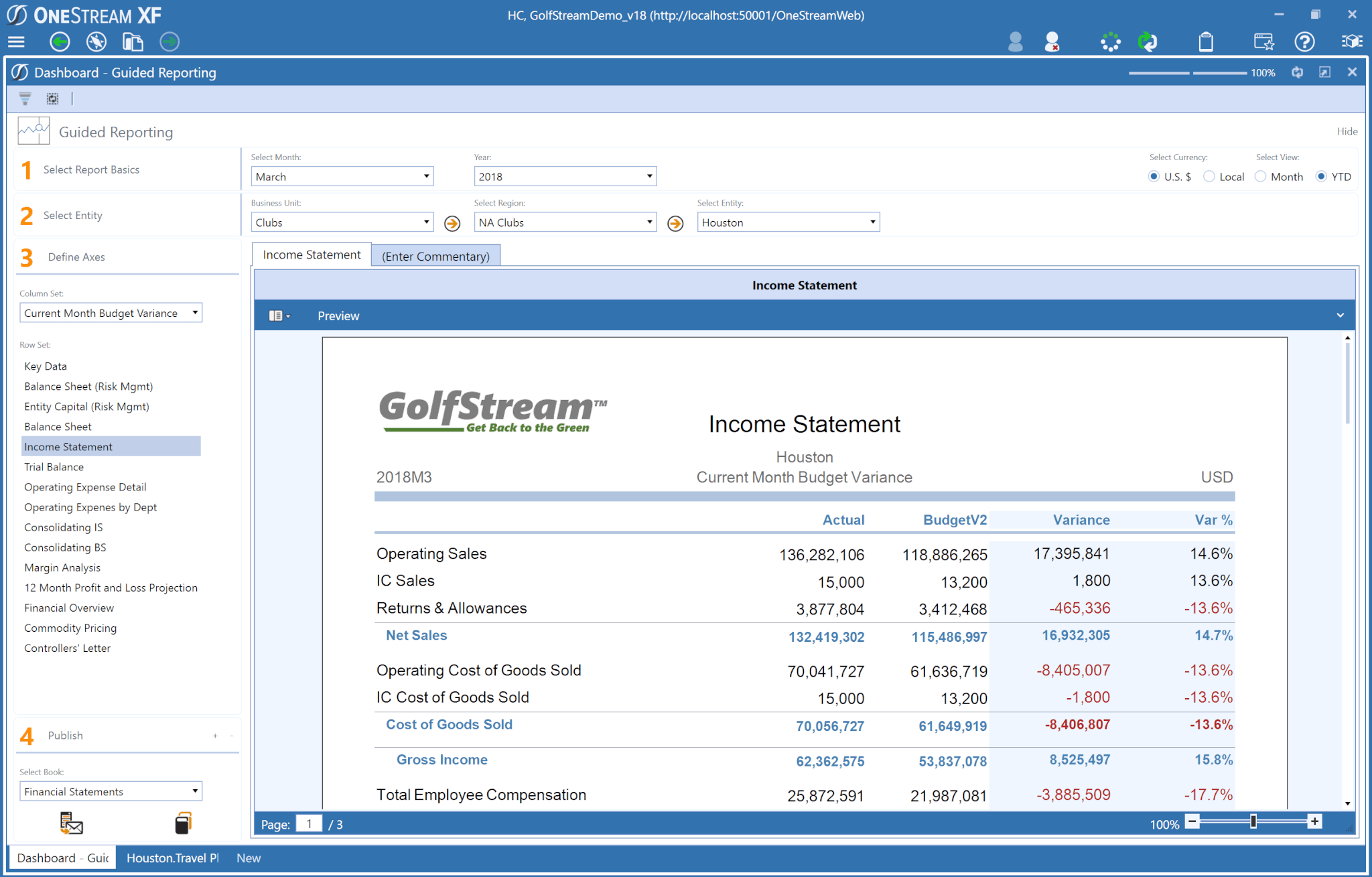The market buzz around Zero-Based Budgeting (ZBB) has been rising in the past few years, with an increasing number of success stories, and some failures, in both the public and private sectors. ZBB is certainly not a new concept – having first emerged in 1969 at Texas Instruments, then adopted by the federal government as a way to reduce federal spending in the 1970’s. But what goes around usually comes around – so ZBB is back in fashion again here in the 21st century.
Zero-Based Budgeting 101
I’ve worked with organizations implementing ZBB before. It’s a practice, that to some extent or another, almost every organization is undertaking, whether it is branded as Zero-Based or not. The fundamental question on everyone’s mind is how can I reduce costs while still growing top line revenue? So, what is ZBB and what type of software tools are required to support it?
Zero-Based Budgeting is a budgeting methodology that is fundamentally different from traditional driver-based planning or organizations Annual Operating Plans (AOP). Under most traditional ways of approaching the budget, last year’s expenses and revenues are used in some manner as a starting place for the next year’s Annual Operating Plan. An organization may use some global drivers to help seed the plan, increasing revenue by a certain percentage. Or they may be seeding the budget with lower operating expenses that may target a particular GL line item, like office supplies or selling & marketing expenses.
ZBB flips these assumptions on its head. Instead of starting with last year’s costs as a baseline, the  organization is focused on creating an annual budget from scratch, at a very detailed level to build up all those costs associated with operating a business. All expenses in the budget are considered fair game and must be justified to remain in the budget.
organization is focused on creating an annual budget from scratch, at a very detailed level to build up all those costs associated with operating a business. All expenses in the budget are considered fair game and must be justified to remain in the budget.
The benefits of a Zero-based approach are real and tangible. If deployed effectively, ZBB can drive efficiencies and real tangible hard dollar savings across the organization. How? Now instead of being “given” a Budget to work in, a Budget must be earned and justified. If someone gave you a $100 bill and said you could spend that $100 however you liked, but if you didn’t spend the $100 you wouldn’t be able to keep it, you would most likely be inclined to spend the $100. The zero-based mindset assumes that you must justify your spend in order to earn the right to spend it.
The result challenges all assumptions, and forces departments to critically evaluate their spending habits. The modern organization simply cannot accept the status quo, they need to do more with less, and reinvest those savings back into the business in meaningful way. Yes, we should look for leaner organizations – and yes, we should look to improve margins, but we must also make investments in our businesses with money that we have saved along the way.
The purpose of this article is not to dissuade or encourage you to accept ZBB in your organization. Working for a provider of budgeting software, I can say with one hundred percent certainty that if there was an agreed upon approach for budgeting and forecasting we would have packaged it and sold it years ago. There is no one way, or frankly right way, to create your budgets. Having personally visited with hundreds of companies, I can tell you first-hand that everyone takes a slightly different approach when it comes to producing the Annual Operating Plan, Budget, Forecast, Rolling Forecast or Strategic Plan. However, if you are looking at software to help transform your organization into a zero-based budgeting organization, you’ll need some specific capabilities in your Corporate Performance Management (CPM) software platform.
If All You Have is a Hammer – Everything Looks Like a Nail.
The old proverb of “if all you have is a hammer – everything looks like a nail” is true when it comes to modern day CPM platform technology. For so long, everything from a budgeting software perspective has been produced in an OLAP Cube. The cube and a multidimensional database is a very efficient way of storing, organizing and rolling up data that is related. That relationship is defined in the hierarchy structures that you establish in the metadata or design in the application itself.
 Now this design has historically been very compatible with the way that the office of the CFO wanted to review and organize data. The Chart of Accounts has a hierarchy structure – as do other complimentary dimensions such as Entity, Product, Cost Center or Location. I can start at the top of my chart of accounts and drill into account details for Revenue, Expenses and my balance sheet.
Now this design has historically been very compatible with the way that the office of the CFO wanted to review and organize data. The Chart of Accounts has a hierarchy structure – as do other complimentary dimensions such as Entity, Product, Cost Center or Location. I can start at the top of my chart of accounts and drill into account details for Revenue, Expenses and my balance sheet.
This type of view is great for reporting, but it’s not necessarily the most efficient for building up very detailed budgets. Sometimes the additional level of granularity is so great that we would never want to add it to the outline. And sometimes you want to create data that is more operational that doesn’t have a hierarchical relationship to the Chart of Accounts. This is where pure multidimensional cubes start to fail in their mission of providing a zero-based approach. Thus, we need a different approach to solve the problem, one that blends relational and OLAP data.
OneStream’s Secret Sauce – Relational Blending
OneStream Software has the unique ability to have both the cube-based model and a relational model that live together harmoniously under one application – we call this Relational Blending. Not all data needs to reside in the cube, some data is better off being stored relationally, especially when it’s very detailed and dynamic.
A classic example is People Planning. If we wanted to create my zero-based organization, planning for each headcount in the organization by name, title or position – I would have needed to add those employees as members, in advance, inside of the multidimensional cube model in order to budget against them. In the world of Zero-Based Budgeting, I don’t necessarily know the who, why or what in advance of setting up my plan in order to create budgets against them. So, I need a data model that supports the creation of new dimension members on the fly – and that’s where a relational database provides a better approach. In OneStream, we provide the ability to blend detailed relational data with the ability to roll-up this data in multidimensional views for analysis and reporting.  Many of OneStream’s specialty planning solutions, delivered via the XF MarketPlace, are based on Relational Blending. People, Capital, Sales and Cash planning are all based on a relational data models. The registry in these solutions allows for ultimate flexibility around the data captured without having to be constrained to deploying metadata to capture this information. Adding new employees is as simple as adding a new row where I can type in a position or employee. Those taken in aggregate build out my compensation model, which is presented in the multidimensional OLAP cube, with the detail fully accessible and supported behind it.
Many of OneStream’s specialty planning solutions, delivered via the XF MarketPlace, are based on Relational Blending. People, Capital, Sales and Cash planning are all based on a relational data models. The registry in these solutions allows for ultimate flexibility around the data captured without having to be constrained to deploying metadata to capture this information. Adding new employees is as simple as adding a new row where I can type in a position or employee. Those taken in aggregate build out my compensation model, which is presented in the multidimensional OLAP cube, with the detail fully accessible and supported behind it.

The most flexible specialty planning solution OneStream offers is called Thing Planning. Think of this as the “Thing” that is really important for your business plan. That “Thing” for you could be travel expenses. Travel is an expense you are trying to capture, quantify and justify. You can use OneStream’s Thing Planning solution to create a registry just for capturing travel expenses at a more granular level, say by trip. That way, when you have the total travel budget you know exactly how and why that spend was created and justified.
Enabling Policy Adherence with OneStream
The Zero-Based Mindset goes beyond capturing detail, it is also about adherence to policy. Let’s take our example above regarding travel expenses. Entering in trip detail does not necessarily produce better or more desirable results. It’s quite possible that the sum of the trips we budgeted for were greater than the budget we would have been “given” had we seeded data based on prior year. So how do we enforce expected behavior to drive down expenses?
OneStream offers some unique advantages in this space. Not only can we use Relational Blending to build budgets, we can still set global drivers and assumptions that are used in detail plans. Much of the time, these drivers apply to an entire Entity or Cost Center. In the case of travel, drivers can be set for what is acceptable domestic vs. international airfare would be by department. We can also enforce costs for hotel nights, rental cars and meals and entertainment. Those drivers are maintained at the multidimensional layer, and when individual departments plan by trip, those assumptions flow through seamlessly into the plan by their selection of trip choice. A domestic conference for my IT department is going to generate expected and repeatable conclusions for costs.

Now departments can override the calculated zero-based results; but in OneStream those overrides are fully transparent thanks to a special dimension known as the Origin dimension. The Origin dimension systematically segregates calculated results vs. adjusted results. You will soon realize that the OneStream Origin dimension is your best friend to easily separate out calculated vs. adjusted values.
The final tool to help ensure adherence to policy in OneStream is confirmation rules. Confirmation rules can be written against any scenario and to test for virtually any policy violation in OneStream. This is powerful tool because after creating all the detail from a ZBB perspective, you need some easy tool to help ensure that the detail is in compliance as well as the aggregate data. Confirmation rules can provide hard or soft confirmation capabilities to drive behavior. Let’s say that as an organization we have established an initiative to reduce office supplies expenses by 10% across the organization. A simple confirmation rule can be deployed indicating if the sum of all the office supplies falls within the acceptable threshold. If data for a department runs contrary to the expected result, you can reject the detailed budget or require textual explanations to explain the variance to policy.
Flexible Reporting in OneStream
But adherence to compliance and the ability to plan at a detailed level is not enough. Easy to produce and accurate reporting is just as important to any zero-based initiative as getting the detail itself. No doubt you have spent a lot of time working through the detail, you need a way to centrally report on both detail and aggregate data. Did you reduce travel expenses by eliminating trips or by reducing the costs of those trips? If we reduced trips, what department took less? How did this line up to last year? Are we seeing any correlation with efficiency or top-line growth with the reductions we made? And what did we do with these saved dollars, what did we do to reinvest or allocate to drive top line growth? By using OneStream to build up for your Zero-Based budget, all data, regardless of what level of detail is reportable.

Saving money with ZBB is the name of the game, but that’s only half of the equation. Savings is not necessarily the fuel for growth. Having an integrated world class reporting platform included with your budgeting solution is paramount to looking for headwinds and making the appropriate adjustments as needed. Many OneStream customers use our Guided Reporting solution, which can easily create pixel perfect, print quality, PDF reporting or use our Excel Add-In for quick ad-hoc analysis. And since with OneStream Actuals, Budgets, Forecasts and Strategic Plans live under one application, looking for trends or comparing back to prior years is as easy changing the reporting year or Scenario.
Learn More
The zero-based mindset may have suffered some blows in recent news stories, but the methodology, whether used for the entire budget or specific initiatives is still alive and well for organizations. Regardless if you choose to use a Zero-Based plan, we at OneStream firmly believe that technology should not limit your organization to adapt and change between budget initiatives. OneStream provides a flexible platform to enable just about any Budget process you could imagine. If you wish to learn more, visit our web site or contact us to setup a demo, so you can see the power of the OneStream platform yourself.
Get Started With a Personal Demo



